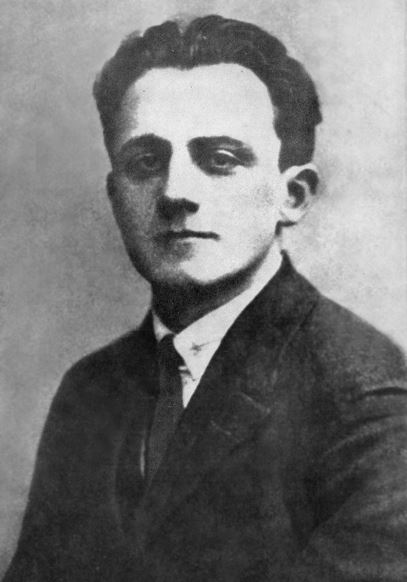The future historian was born on November 21, 1900 in the town of Buchach in Ternopil region. Although his parents were not orthodox Jews, little Emanuel graduated from a local header. During his further studies at the gymnasium, he joined the Zionist youth organization.
At the beginning of the World War I, due to the fear of anti-Jewish pogroms, the Ringelblum family moved from Buchach to Nowy Sacz (southern Poland). There Edek (as his classmates called him) studied at the local gymnasium, in 1920 he successfully passed the final exams. Joining the youth section of the Poalei Zion party, he began his own political career. He soon met his future wife, Judith Herman. In 1930 the couple had a son, Uriel (Uri).
At the same time, Ringelblum graduated from the Faculty of History of the University of Warsaw and defended his dissertation on "Jews in Warsaw from early times to 1527." For some time he devoted himself to teaching at the school and at the same time continued to write scientific articles, works on the history of Polish and Eastern European Jewry. In 1923, he founded the Society of Young Historians under the auspices of the YIVO (Institute for Jewish Studies) in Vilnius, later known as the Warsaw Historical Commission.
Emanuel bounded his scientific interests with social work. Since the 1930s, Ringelblum has been a member of the American Jewish Joint Distribution Committee (Joint) and has been involved in various initiatives of the institution. In particular, he developed social security programs that opened "public canteens" and set up House Committees for the needy Jewish population. During the Nazi occupation, he participated in the Central Relief Committee (later the Coordinating Committee), which oversaw the activities of Jewish humanitarian and charitable organizations in Warsaw. This committee became the basis for Jewish Social Self-Help (ESSD) in the ghetto; Ringelblum headed the Social Work Section. He was also involved in the resistance: in particular, he participated in the creation of the Jewish Combat Organization.
From the first months of the war, Emanuel began collecting reports on the events he witnessed. He took notes in the form of a diary and included his friends and acquaintances in the lesson. This was the beginning of the underground organization "Oneg Sabbath" (translated from Hebrew - "Joy of the Sabbath") - a meeting of participants was held every Saturday. The secret institution operated under the guise of the ESSD and consisted of 60 participants with different professional, political and personal views.
In March 1943, the Ringelblum family managed to leave the ghetto and hide on the "Aryan side" of Warsaw, in the suburbs of Ochota. On the eve of the uprising in the Warsaw Ghetto, Emanuel was sent to the Trawniki labor camp, but soon, thanks to members of the Warsaw Resistance, escaped and returned to the capital. In early March 1944, the Nazis found the whereabouts of the Ringelblum family and took them to Pawiak Prison. Several attempts to free Ringelblum were in vain - in March 1944, Emanuel and his wife and son were shot dead by the Nazis in the ruins of the Warsaw Ghetto. So tragically ended the life of a man, but not a scientist…
All the reports and documents that made up the Oneg Shabbat archive were placed in milk cans and metal chests and hidden in ghetto buildings with the prospect of their restoration after the war. Two parts of the huge archive were found in 1946–1950; the third was lost forever. To this day, Ringelblum's archives remain the main source on the history of the Warsaw Ghetto and a kind of "monument" to this outstanding figure. In 1999, UNESCO included the Ringelblum Archive in the list of "Memory of the World" - the most important documents of the written word. Since 2009, the Jewish Historical Institute in Warsaw has been named after the scholar.
In the library of Museum "Jewish Memory and Holocaust in Ukraine" you can get acquainted with the literature dedicated to the life of this outstanding figure, the conditions of his life in occupied Warsaw:
Literaure:
- Archiwum Ringelbluma. Dzien po dniu Zaglady. Warszawa, 2011. 260 s.
- Archiwum Ringelbluma: Konspiracyjne Archiwum Getta Warszawy. Tom 3.: relacje z Kresow. Ed. A. Zbikowski. Warszawa, 2001. 964 s.
- Memory: The History of Polish Jews Before, During and After the Holocaust. Ed. by F. Tych. Warszawa, 2008. 224 s.
- Notes from the Warsaw Ghetto: The Journal of Emmanuel Ringelblum / ed. and transl. J. Sloan. New York: Schocken Books Inc., 1989. 370 p.

